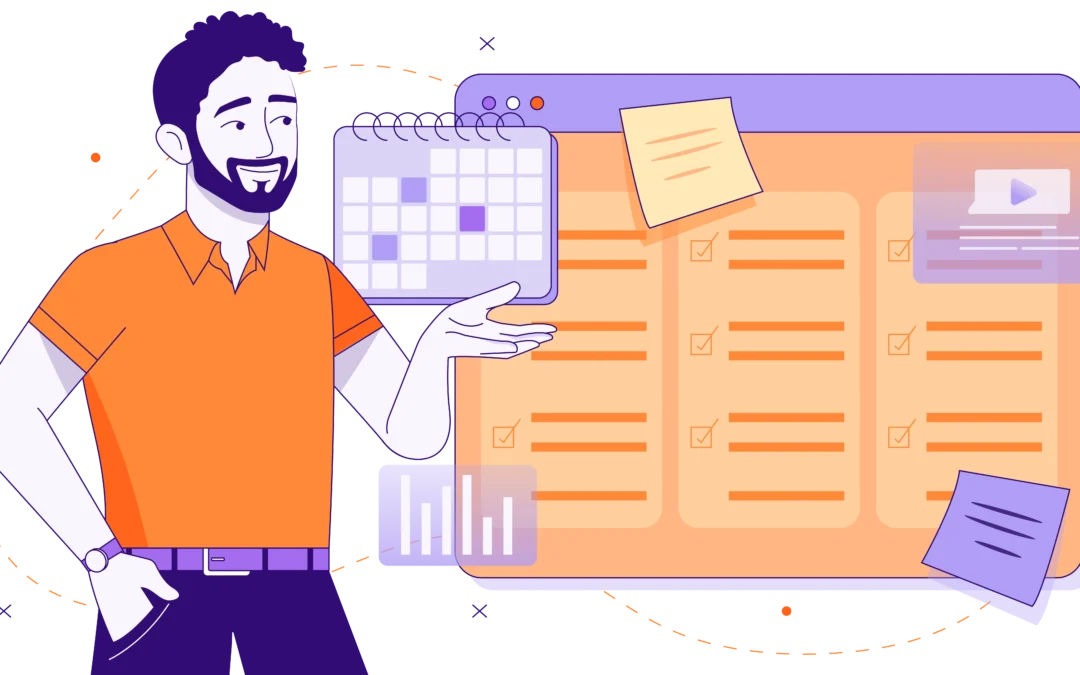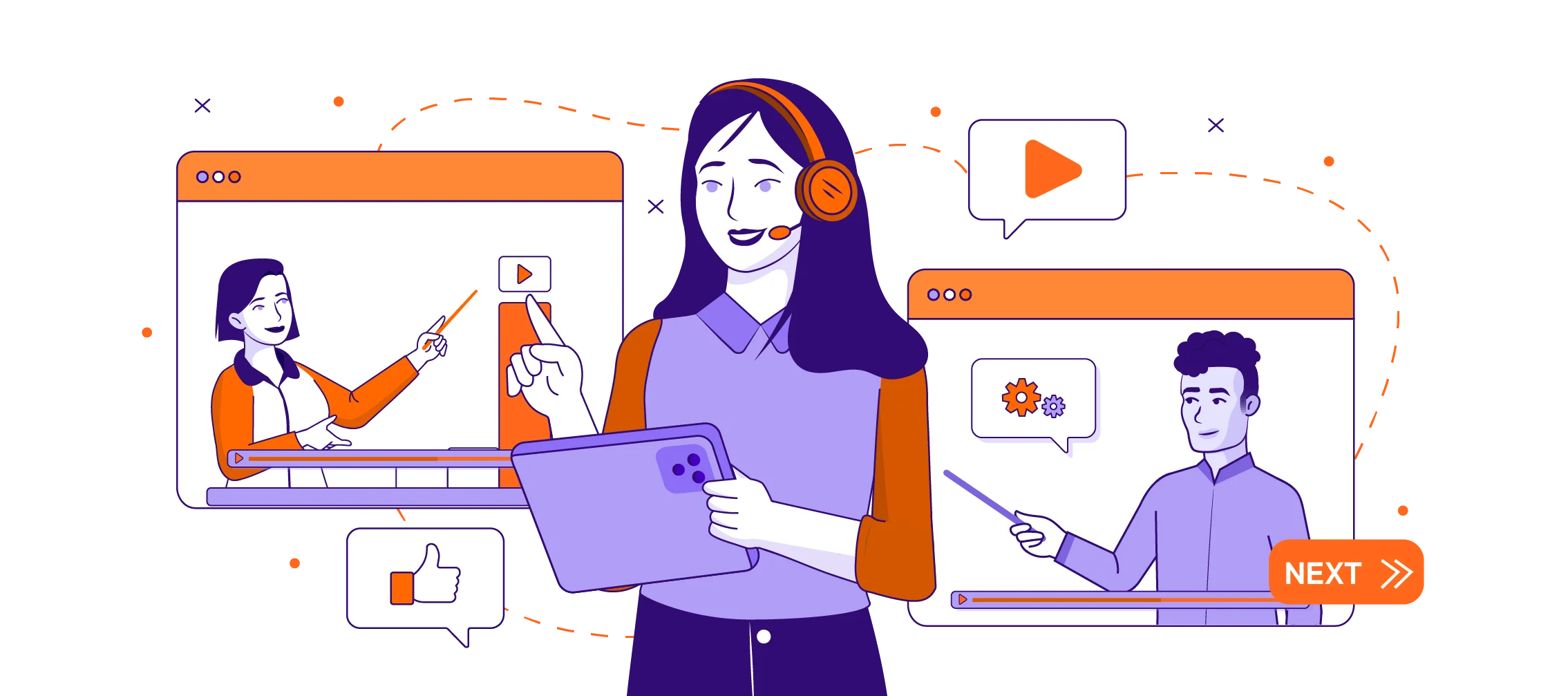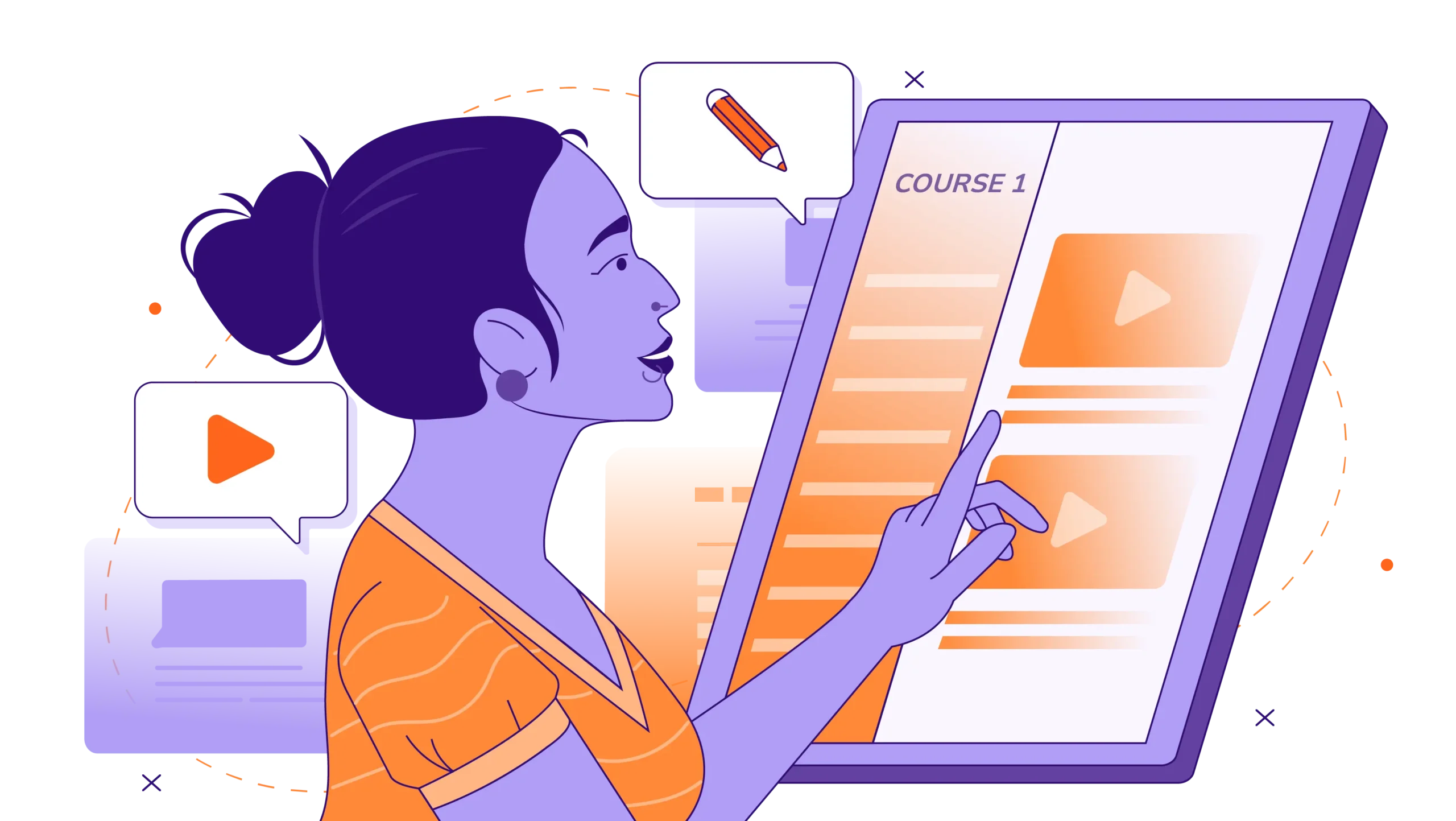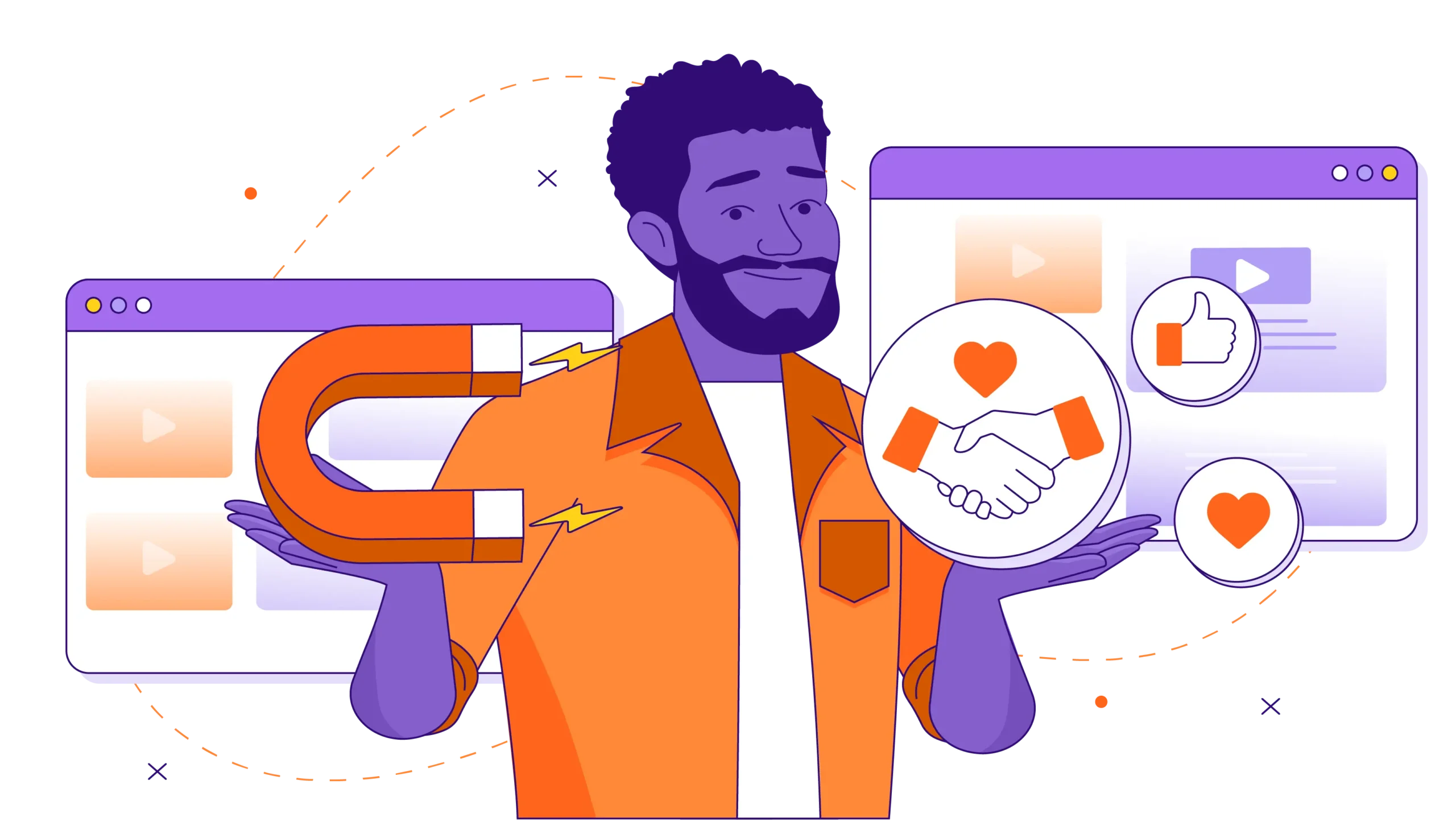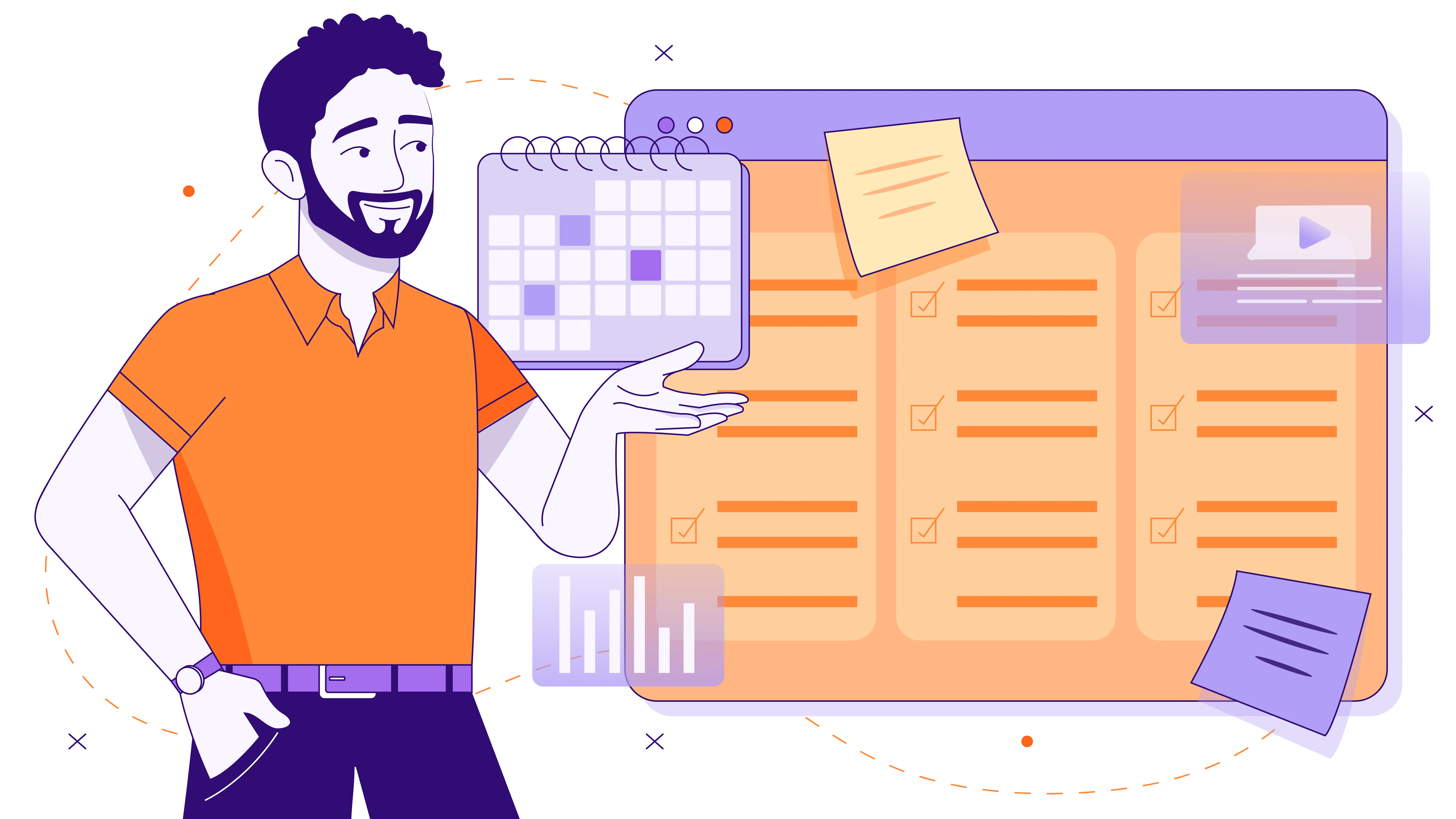
How to Build an Effective Customer Education Strategy that Drives Adoption
Your customers need knowledge to succeed. A well-planned customer education strategy can empower your audience, drive product adoption, and elevate your business outcomes. But where do you start? Let’s break it down.
What is Customer Education?
Customer education is the process of teaching your customers how to use your products or services effectively. It involves creating resources—like training videos, interactive modules, or eLearning courses—that guide users through essential features, advanced capabilities, and best practices.
Think of it as a tool for engagement. When customers understand your product, they’re more likely to use it often, remain loyal, and recommend it to others.
To create engaging learning experiences, focus on understanding your audience’s needs and preferences. Tailor your content to their skill level and learning style. Use a variety of formats, such as videos, interactive quizzes, and downloadable guides. Make sure your content is easy to find and access. And most importantly, make it relevant to your customers’ goals.
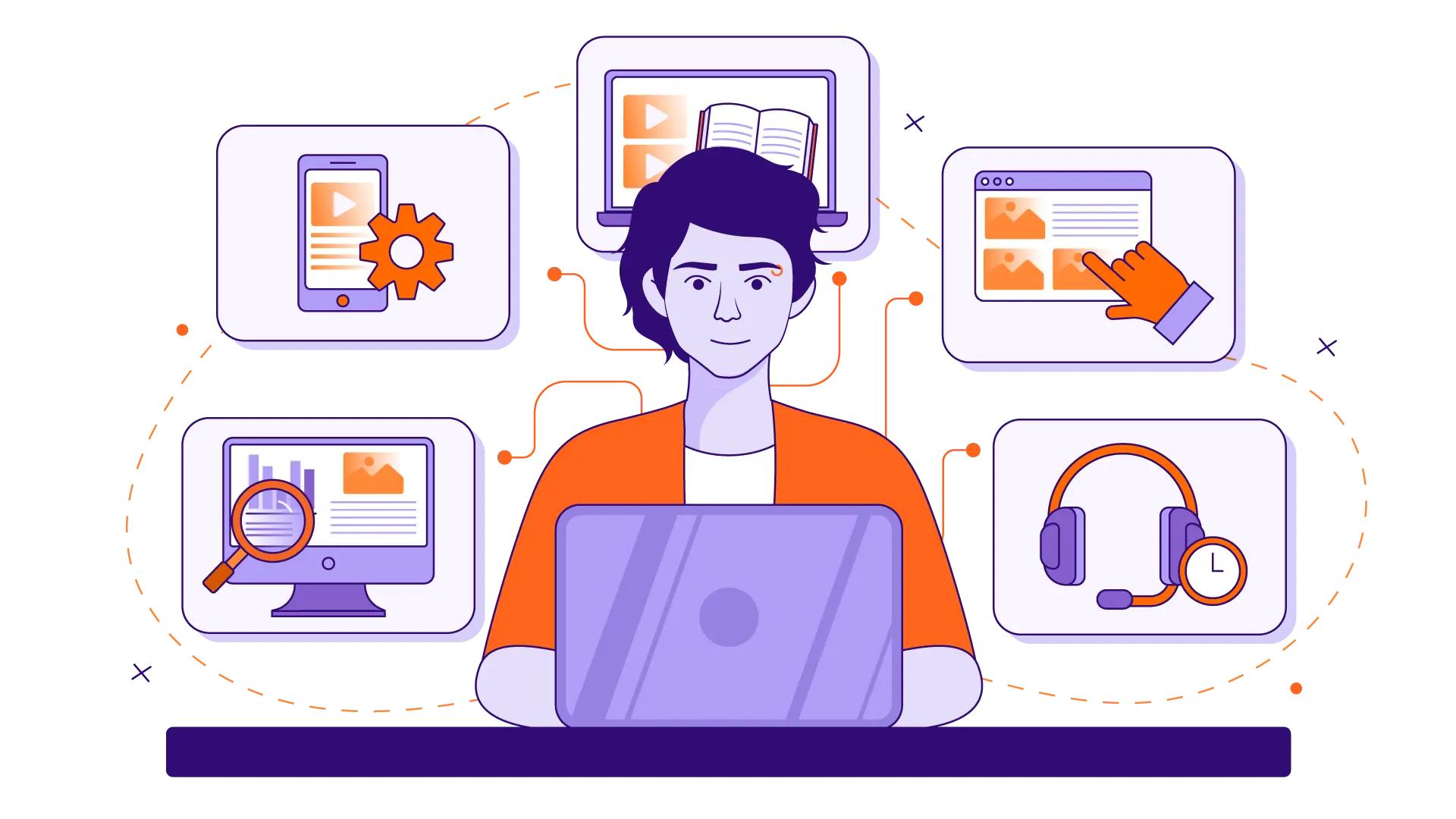
How to create an effective Customer Education Strategy
Building a customer education strategy involves several steps. Here’s how to approach it:
Define Your Goals:
Before you start creating content, it’s important to define your goals. What do you want to achieve with your customer 1 education program? Are you trying to increase product adoption, reduce support tickets, or improve customer satisfaction? Once you know your goals, you can create content that is aligned with them.
Example: If your goal is to increase product adoption, you might create a series of onboarding videos that walk new users through the key features of your product.
Understand Your Audience:
It’s important to understand your audience’s needs, preferences, and skill levels. What kind of content will they be most receptive to? How much time do they have to learn? By tailoring your content to your audience, you can make it more effective.
Example: If you’re creating content for a technical audience, you can use more complex language and technical jargon. However, if you’re creating content for a general audience, you should use simpler language and avoid technical jargon.
Develop Engaging Content:
Your content should be engaging, informative, and easy to understand. Use a variety of formats, such as videos, infographics, and interactive quizzes. Make sure your content is well-organized and easy to follow.
Example: You can use videos to demonstrate how to use your product, infographics to explain complex concepts, and interactive quizzes to test your learners’ knowledge.
Choose the Right Delivery Methods:
There are a variety of ways to deliver customer education content. You can use an LMS, host videos on your website, or send out email newsletters. Choose the methods that are most appropriate for your audience and your goals.
Example: If you have a large number of customers, you might want to use an LMS to deliver your content. However, if you have a small number of customers, you might be able to deliver your content through email newsletters or your website.
Measure Success:
It’s important to track the success of your customer education program. Use analytics to measure metrics such as course completion rates, customer satisfaction, and product adoption. This data can help you identify areas for improvement and make adjustments to your strategy.
Example: You can use Google Analytics to track how many people are watching your videos and how long they are watching them for. You can also use surveys to ask your customers how satisfied they are with your customer education program.
Additional Tips
- Make your content easy to find. Use clear and concise titles and descriptions for your content.
- Make your content accessible. Use closed captioning and transcripts for your videos.
- Promote your content. Let your customers know that you have created valuable content that can help them.
- Get feedback from your customers. Ask them what they think of your content and what they would like to see in the future.
By following these tips, you can create a customer education program that is engaging, informative, and effective.
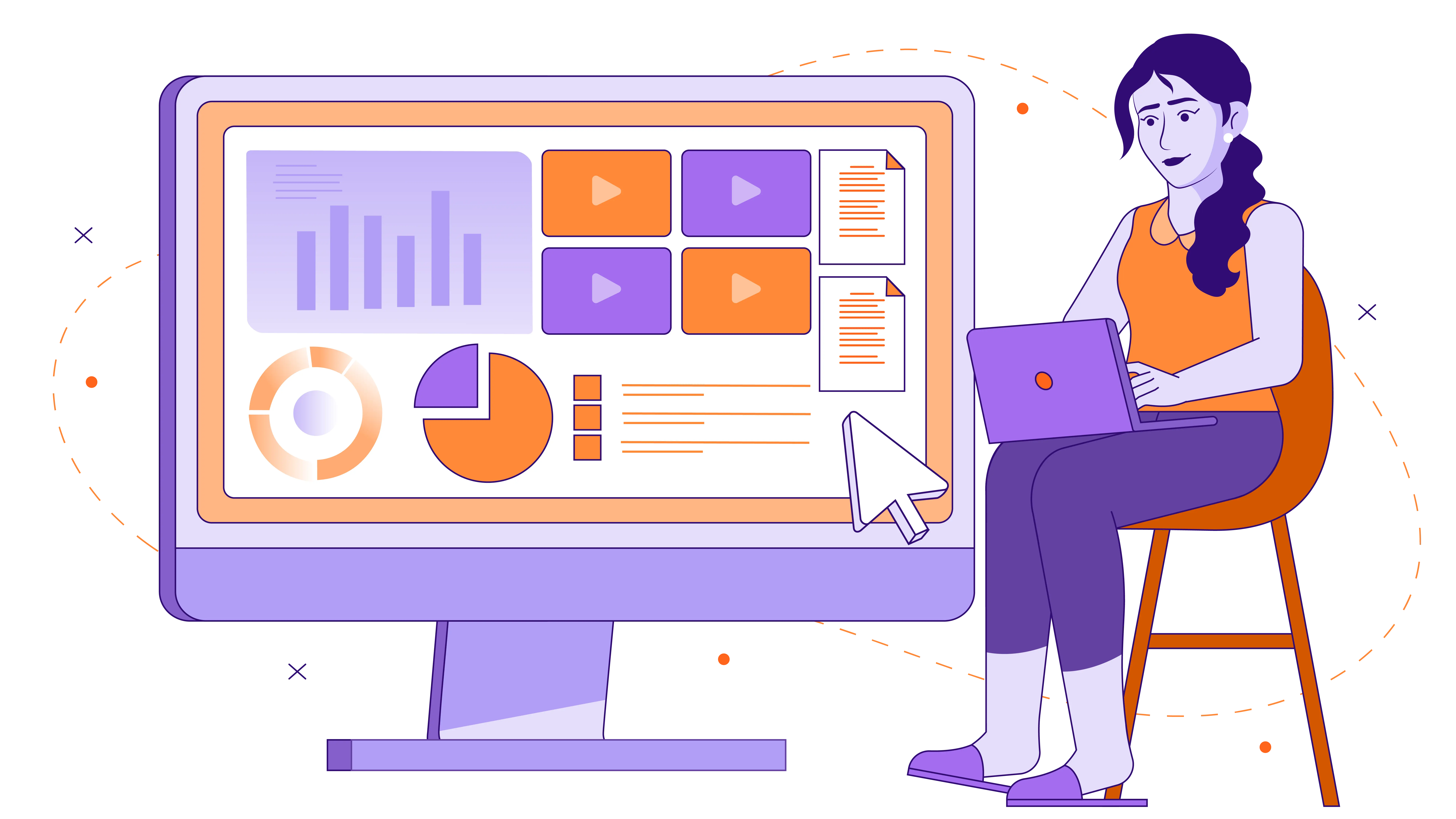
Starting a Customer Education Program
Assembling Your Team:
To build a successful customer education program, you’ll need a team of experts. This team should include subject matter experts, instructional designers, and marketers. Subject matter experts will provide the knowledge and expertise needed to create high-quality content. Instructional designers will create engaging and effective learning experiences. And marketers will help promote your customer education program and drive engagement.
Creating a Content Plan:
Once you have your team in place, you’ll need to create a content plan. This plan should outline the topics you’ll cover, the format of your content, and the delivery method. It’s important to start with the basics and then gradually introduce more advanced topics.
Example: If you’re creating a customer education program for a new product, you might start with a series of onboarding videos that introduce the basic features of the product. Then, you can create more advanced content, such as tutorials and webinars, to help customers learn how to use the product more effectively.
Developing Your Content:
Once you have your content plan, you can start developing your content. This is where your team of subject matter experts and instructional designers will come in handy. They can help you create content that is engaging, informative, and easy to understand.
Example: If you’re creating a video tutorial, you can use screen recording software to capture your screen and add voiceover narration. You can also use animations and graphics to make your videos more visually appealing.
Launching and Iterating:
Once you have created your content, it’s time to launch your customer education program. You can promote your content through your website, social media, email newsletters, and other channels. It’s important to start small and gradually expand your program as you gain experience.
Example: You might start by launching a few key pieces of content, such as onboarding videos and product tutorials. Then, you can add more content over time, such as advanced training courses and webinars.
Iterating Your Customer Education Program:
Customer education is an ongoing process. It’s important to continuously evaluate your program and make improvements. You can do this by collecting feedback from your customers, tracking key metrics, and analyzing your data.
Example: You can use surveys and feedback forms to collect feedback from your customers. You can also track metrics such as course completion rates, customer satisfaction, and product adoption. By analyzing this data, you can identify areas where you can improve your customer education program.
By prioritizing measurable results and engaging learning experiences, Ninja Tropic eLearning ensures your customer education strategy not only meets but exceeds expectations. Let’s build something impactful together!
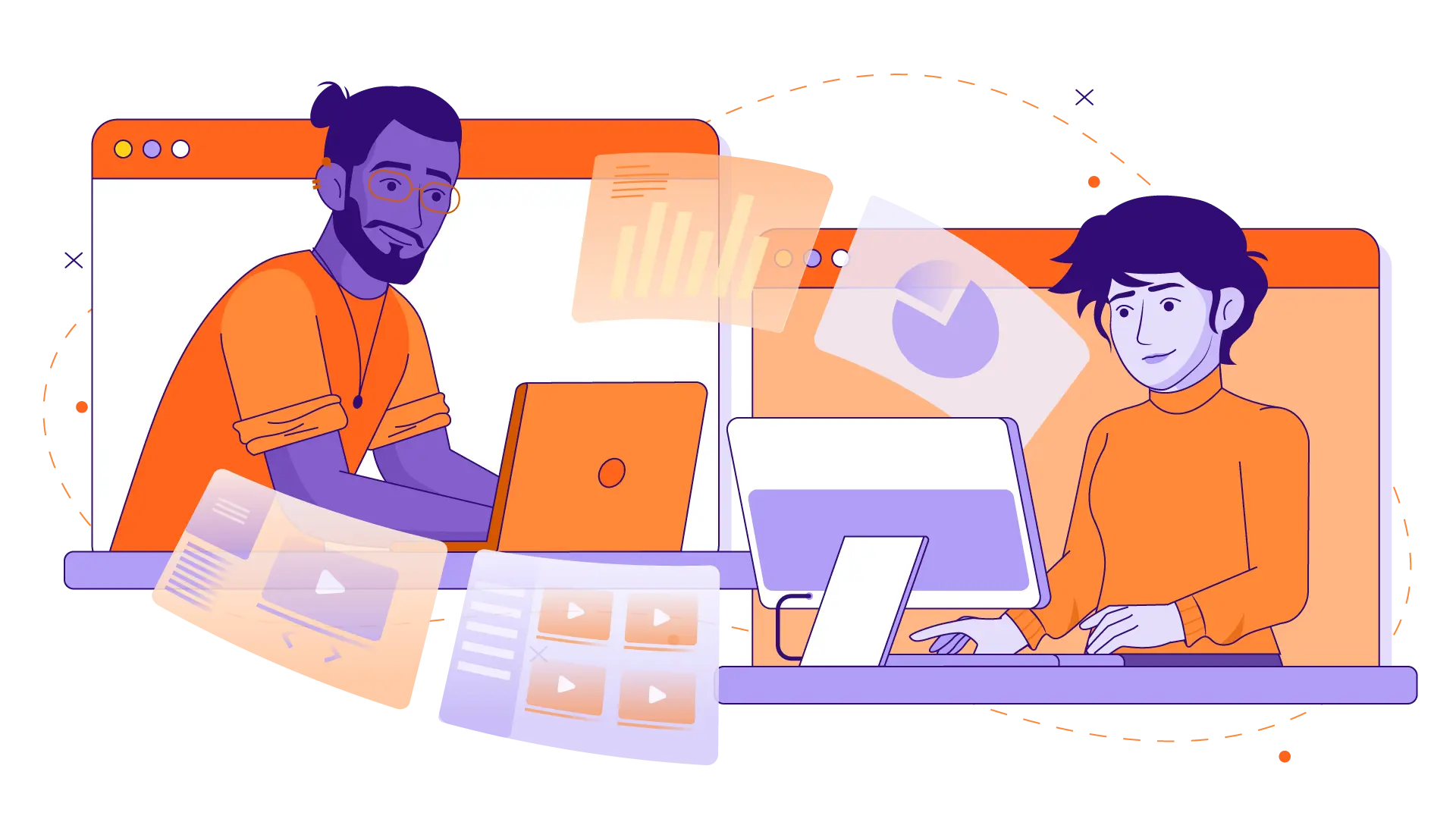
Best practices for Customer Education
Customer education should always be straightforward and accessible. Avoid using complex jargon or overly technical terms that might confuse your audience. Instead, focus on clear and concise language to ensure your message resonates with everyone. A well-designed education program helps customers easily understand your product service and how it benefits them. By simplifying your content, you make it easier for learners to succeed, which drives customer success and builds long-term loyalty.
Make It Engaging:
Engaging content is the foundation of an effective education strategy. Use videos, animations, and real-life scenarios to capture your audience’s attention and maintain their interest. Whether it’s for a customer training course or a broader customer education initiative, interactive media makes learning more enjoyable and impactful. Keeping learners engaged is key to customer success and ensures they continue to explore your product service to its full potential.
Focus on Skills, Not Just Features:
Great customer education emphasizes building skills over simply listing features. Teach customers how your product service can solve their problems and make their lives easier. An education program should focus on real-world applications and outcomes that matter to your audience. When you help them develop valuable skills, you not only strengthen customer support but also increase the effectiveness of your education strategy.
Offer On-Demand Access:
Modern learners value flexibility. Your customer education materials should be accessible anytime, anywhere, so customers can learn at their own pace. Offering on-demand content as part of your education program ensures that busy users can fit learning into their schedules. This approach also reduces reliance on real-time customer support, contributing to improved customer success and satisfaction.
Gather Feedback:
Regularly collecting feedback is essential to refining your customer education efforts. Use surveys or analytics to identify gaps and opportunities for improvement. Incorporate feedback into your education program to create an evolving system that meets your customers’ needs. A feedback loop helps enhance your education strategy, improve your product service offerings, and strengthen customer training initiatives, ultimately boosting customer support and success.

Types Of Customer Education
Customer education is not one-size-fits-all. To create an effective education strategy, you need to tailor your approach to meet the specific needs of your audience. User experience should always be at the forefront, and data shows that video is the most engaging format—80% of customers prefer learning through video over text or static documentation. Let’s explore the key types of customer education and their unique roles.
Onboarding Training:
Onboarding is the first step in ensuring a seamless user experience. Videos, in particular, are highly effective for onboarding because they break down complex processes visually and interactively. New customers engage more quickly when they can watch a short, clear demonstration of how to get started with your product or service.
Product Tutorials:
When customers need to understand specific features, product tutorials step in. These videos are perfect for showing step-by-step instructions, helping users navigate the product confidently. A well-executed tutorial video enhances customer satisfaction by addressing pain points directly.
Advanced Skills Training:
For power users, advanced skills training is essential to unlocking the full potential of your product. Interactive and video-based training makes complex use cases easier to grasp, giving experienced users the tools they need to excel. This approach not only improves their experience but also drives loyalty and deeper adoption.
Support Documentation:
While video dominates in engagement, support documentation still plays a critical role as a reference tool. Combining searchable documentation with short, embedded videos improves accessibility and usability. This hybrid approach enhances the customer experience by catering to diverse learning preferences.
Community Learning:
Facilitating peer-to-peer learning through forums, webinars, or community-driven events fosters a sense of connection among your users. Video discussions or recorded Q&A sessions can amplify this engagement, creating a shared knowledge base that boosts user confidence and satisfaction.
Each type of customer education serves a distinct purpose, but they all contribute to a unified goal: improving the user experience. Whether it’s onboarding videos for beginners or in-depth tutorials for advanced users, prioritizing video content ensures higher engagement and better outcomes. Customers who feel supported and informed are far more likely to remain loyal and recommend your product
Go Create Your Customer Education Strategy
Now that you understand the essentials, it’s time to act. Start small. Focus on your most pressing customer needs and build from there. Remember, customer education isn’t just about teaching—it’s about empowering. When customers feel confident, they adopt your product faster, use it more often, and share their positive experiences.
If you need help creating engaging, results-driven training, Ninja Tropic eLearning is here for you. With our expertise, you can deliver customer education that builds skills, influences attitudes, and achieves business outcomes.
Frequently Asked Questions (FAQs)
Q: How do I know if my customer education strategy is working?
A: Measure key metrics like course completion rates, product adoption, and customer satisfaction. Use surveys and analytics to track progress.
Q: What’s the best format for customer education?
A: It depends on your audience. Video is often the most engaging format, but interactive eLearning, webinars, and articles can also be effective.
Q: Can Ninja Tropic help with multilingual customer education?
A: Yes! We specialize in creating multilingual content to reach diverse audiences worldwide.
Q: How long does it take to launch a customer education program?
A: It varies based on complexity. A basic program can launch in a few weeks, while larger initiatives may take months.
To explore options and learn more about customer education, consider visiting these other pages:
DOWNLOAD YOUR KEY TO KNOWLEDGE
Access Valuable Resources to Fuel Your Learning Journey
